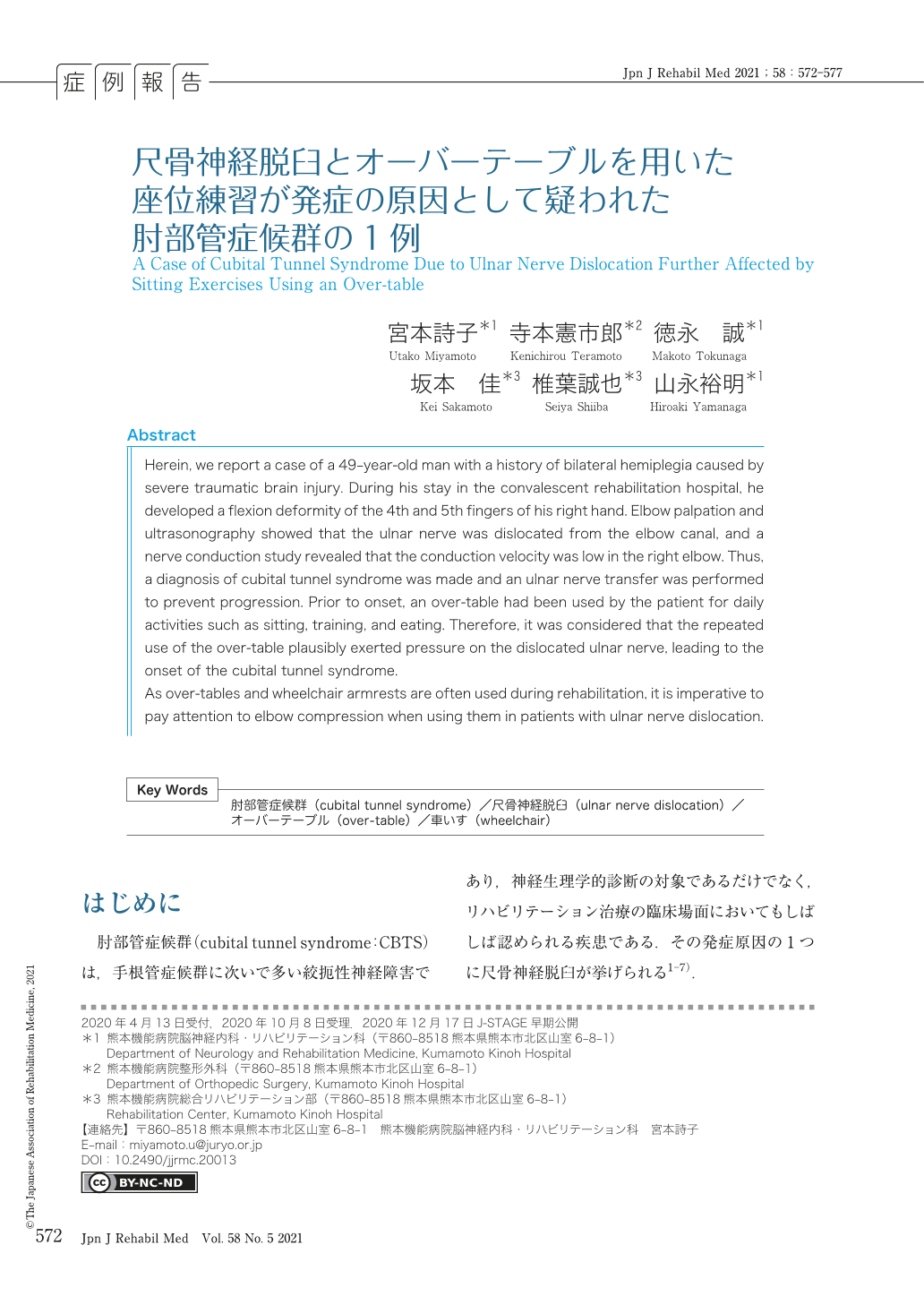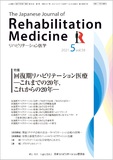Japanese
English
- 販売していません
- Abstract 文献概要
- 1ページ目 Look Inside
- 参考文献 Reference
はじめに
肘部管症候群(cubital tunnel syndrome:CBTS)は,手根管症候群に次いで多い絞扼性神経障害であり,神経生理学的診断の対象であるだけでなく,リハビリテーション治療の臨床場面においてもしばしば認められる疾患である.その発症原因の1つに尺骨神経脱臼が挙げられる1-7).
重度の外傷性脳損傷により中枢性麻痺を呈した患者が,回復期リハビリテーション病棟入院中にCBTSを発症した.その発症機転には,脱臼した尺骨神経に対して反復的なオーバーテーブルからの圧迫が加わった機序が疑われた.
リハビリテーション診療において,オーバーテーブルは日常的に使用されるものである.座位が不安定な意識障害患者に尺骨神経脱臼があった場合,オーバーテーブル使用というリハビリテーション治療によってCBTSを生じる可能性が考えられたため,本症例の臨床経過を報告する.
Herein, we report a case of a 49-year-old man with a history of bilateral hemiplegia caused by severe traumatic brain injury. During his stay in the convalescent rehabilitation hospital, he developed a flexion deformity of the 4th and 5th fingers of his right hand. Elbow palpation and ultrasonography showed that the ulnar nerve was dislocated from the elbow canal, and a nerve conduction study revealed that the conduction velocity was low in the right elbow. Thus, a diagnosis of cubital tunnel syndrome was made and an ulnar nerve transfer was performed to prevent progression. Prior to onset, an over-table had been used by the patient for daily activities such as sitting, training, and eating. Therefore, it was considered that the repeated use of the over-table plausibly exerted pressure on the dislocated ulnar nerve, leading to the onset of the cubital tunnel syndrome.
As over-tables and wheelchair armrests are often used during rehabilitation, it is imperative to pay attention to elbow compression when using them in patients with ulnar nerve dislocation.

Copyright © 2021, The Japanese Association of Rehabilitation Medicine. All rights reserved.


